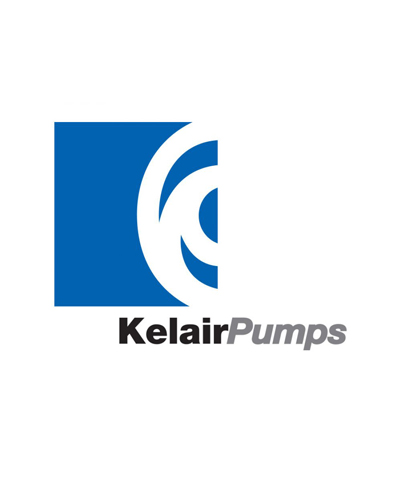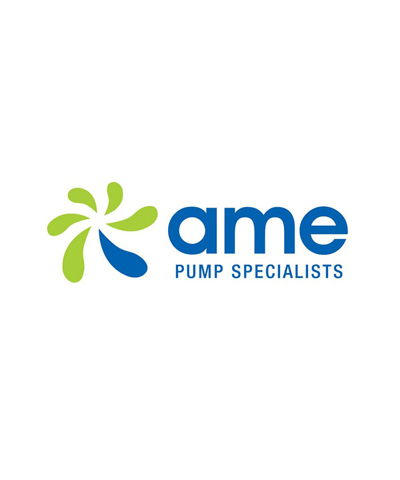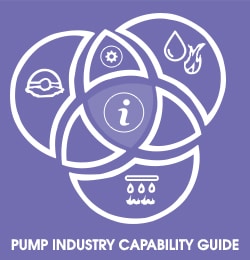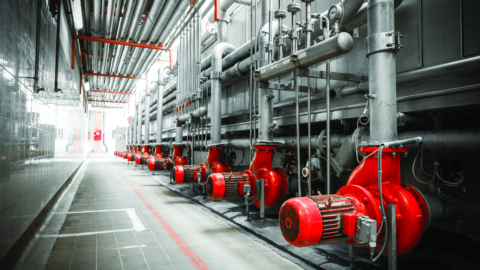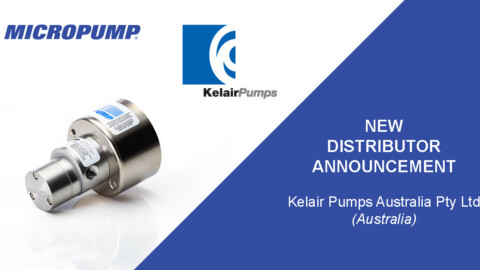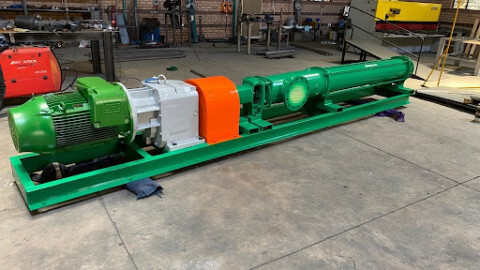Positive displacements pumps is a broad category of pump, consisting of rotary and reciprocating type pumps, and is the second most popular type of pump after centrifugal pumps.
These pumps move fluid at a steady rate and pressurise it to allow it to pass through a system by drawing the fluid into a chamber, and then contracting the chamber to force the fluid out at the pressure needed to move it through the piping system.
These pumps use rotating or reciprocating parts, rather than impellers, to push the liquid in an enclosed moveable volume until enough pressure has built up to move it to the discharge. Unlike centrifugal pumps which rely on raising the velocity of the fluid by moving it through an impeller, the fluid velocity inside positive displacement pumps is much lower.
Positive displacement pumps generally work within the following ranges:
- Flow rate ranges between 0.1-15,000gpm
- Total head (pressure) ranges between 10-100,000psi
- Horsepower ranges between 0.5-5,000hp
- Viscosity limits vary with pump type, but some types can handle millions of SSU viscosity
Due to their lower fluid velocity, these pumps are ideal for applications where fragile solids need to be moved. They are also ideal for applications where constant flow is needed, and are generally used for pumping oils and viscous fluids, and other application niches.
Where low flow rates are adequate and preferred, positive displacement pumps are a better option than other dynamic pumps
These pumps are self-priming and sealless types are available.
Types of positive displacement pumps
There are two main types of positive displacement pumps: rotary and reciprocating.
Rotary pumps use rotating parts to move a fixed volume of fluid in and out of the pump chamber. They are designed with very small clearances between rotating and stationary parts in order to minimise leakage from the discharge side to the suction side, so they are not suitable for pumping large solids or abrasive fluids as parts will quickly wear out. They are commonly used for pumping high viscosity liquids. Common types of rotary pumps include: vane, flexible member, screw, peristaltic, progressive cavity, gear and lobe.
Reciprocating pumps use a repetitive reciprocating mechanism that expands and contracts the chamber at regular intervals to move fluid. They use one or more sets of check valves at the pump inlet and outlet to guide the fluid through the pump and prevent reverse flow. As this is a broad category of pumps, they’re used across a wide range of applications including private, public, and commercial/industrial sectors. Common types of reciprocating pumps include: single acting, double acting pumps, mechanical diaphragm, piston, plunger, hydraulically actuated diaphragm, bladder, and well-point piston pumps.



